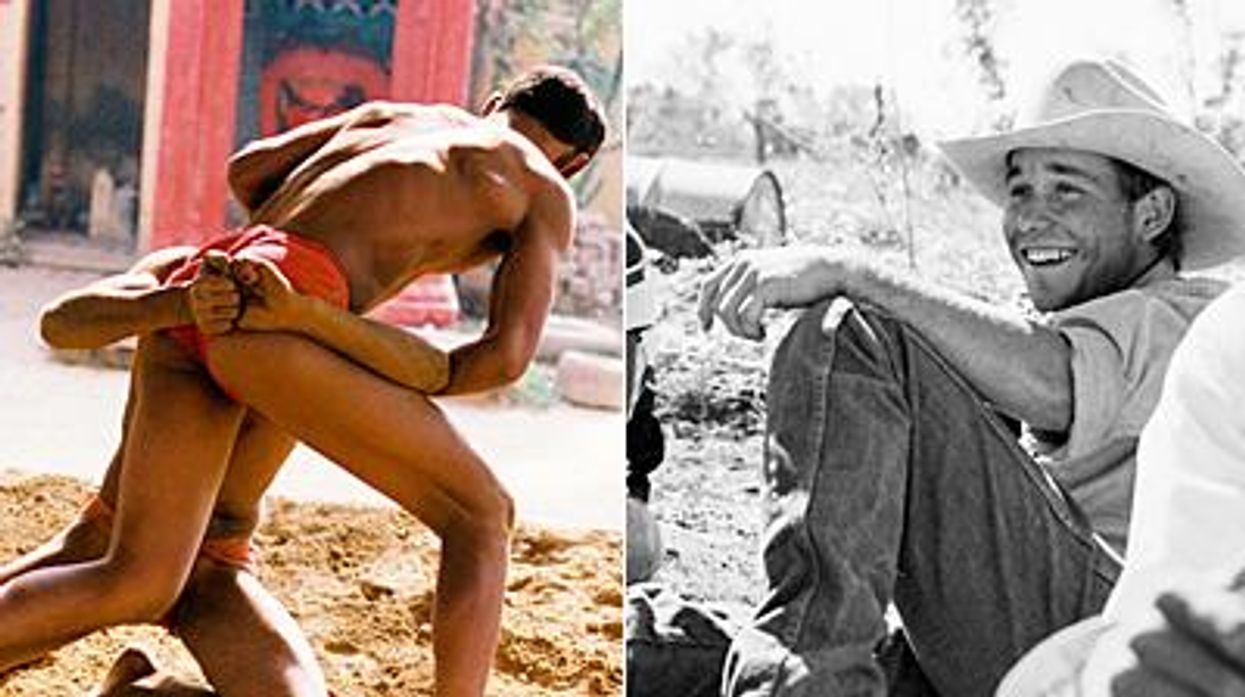
Ohrem-Leclef juxtaposes images from two different isolated male communities to reveal similarities.
April 27 2013 4:00 AM EST
xtyfr
By continuing to use our site, you agree to our Privacy Policy and Terms of Use.

Photographer Marc Ohrem-Leclef explains it best himself:
"Cowboys and Indians" introduces us to two insular, male-dominated communities.
The first is a group of "jackaroos" (the term for young cowboys in Australia), in a very remote area of northern Queensland that has neither FM radio nor cell phone reception or any sizable village within a vicinity of over 100 miles.
The other is a group of wrestling students in their sacred and thus somewhat 'off-limits' training grounds -- part clay/dirt arena, part temple to the Hindu-god Hanuman -- in a congested city in northern India.
Here they follow the thousand-year-old practice of kushti, a style of wrestling that embraces Hindu spiritual tradition.
The two communities are based on nearly opposite motivations: the "jackaroos" being in it for the money, out of necessity; the wrestlers choosing an athletic pastime tied into their religious beliefs. Where they mirror one another is in that these young men immerse themselves in an environment where physicality becomes a centerpiece of their togetherness and interaction, a physicality that is inherently, and in a classic sense, masculine.
While I cannot deny a motivation to manifest some of the iconic, romantic ideas of masculinity, beauty, domination, and strength associated with my subjects in "Chasing Cows" and "Untitled, the Indian Wrestling Students", it is the questioning and dismantling of these stereotypical notions that makes the photographic journey complete for me.
Choosing environments that are characterized by some form of isolation helps me confront my own romanticized perceptions regarding my subjects. Absent outside distractions, I can deeply absorb the dynamics and forces that move them.
As I immerse myself in their element, I gain a deeper understanding of the choreography they move to, both emotionally and physically. Whether that choreography is drawn by tradition or a certain work flow, I attempt to remain a respectful observer; attentive to the moments when a facade (the pressure of a certain role they play within their community), falls off my subjects and I can reveal an ambiguity, vulnerability and tenderness -- youth instead of manhood, worship instead of fight, beauty beyond of where it manifests itself in immediate physicality.
It is those unexpected moments that I hope to reveal.
I believe that these fleeting moments of suspense, before a tipping point is reached, tell a more nuanced story than moments of resolution.
-- Marc Ohrem-Leclef
For more information on Ohrem-Leclef and his work check his Web site.
Charlie Kirk DID say stoning gay people was the 'perfect law' — and these other heinous quotes